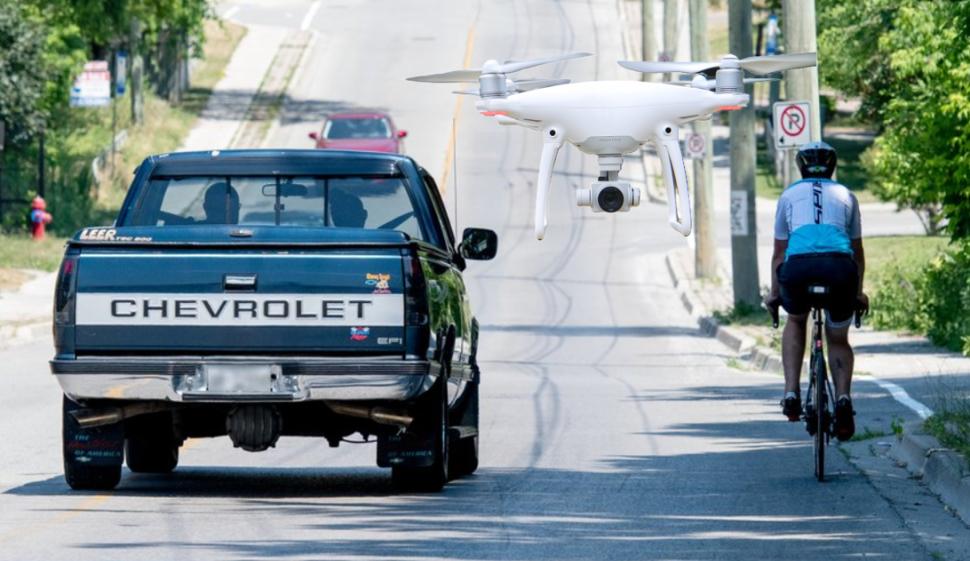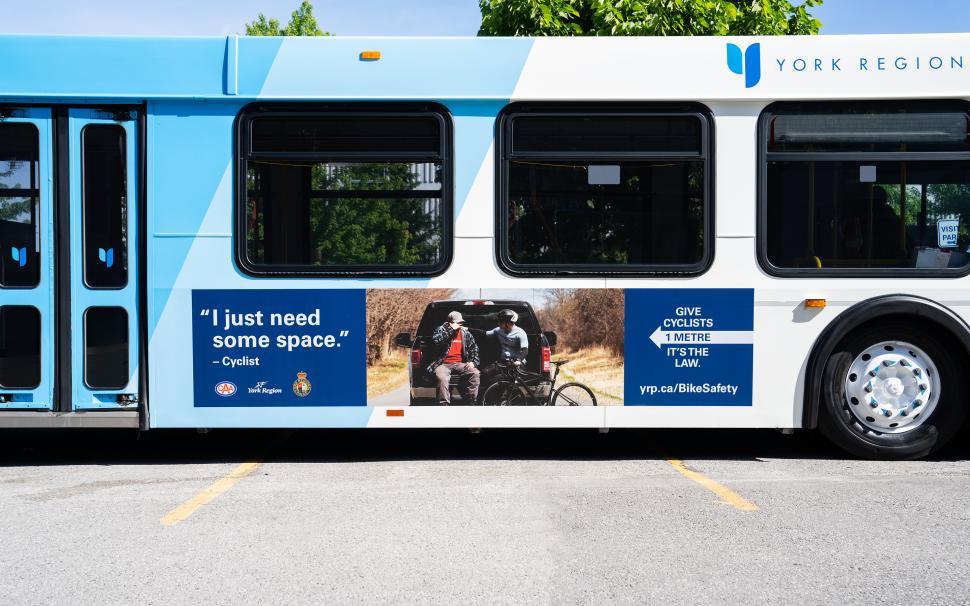- News
- Reviews
- Bikes
- Components
- Bar tape & grips
- Bottom brackets
- Brake & gear cables
- Brake & STI levers
- Brake pads & spares
- Brakes
- Cassettes & freewheels
- Chains
- Chainsets & chainrings
- Derailleurs - front
- Derailleurs - rear
- Forks
- Gear levers & shifters
- Groupsets
- Handlebars & extensions
- Headsets
- Hubs
- Inner tubes
- Pedals
- Quick releases & skewers
- Saddles
- Seatposts
- Stems
- Wheels
- Tyres
- Tubeless valves
- Accessories
- Accessories - misc
- Computer mounts
- Bags
- Bar ends
- Bike bags & cases
- Bottle cages
- Bottles
- Cameras
- Car racks
- Child seats
- Computers
- Glasses
- GPS units
- Helmets
- Lights - front
- Lights - rear
- Lights - sets
- Locks
- Mirrors
- Mudguards
- Racks
- Pumps & CO2 inflators
- Puncture kits
- Reflectives
- Smart watches
- Stands and racks
- Trailers
- Clothing
- Health, fitness and nutrition
- Tools and workshop
- Miscellaneous
- Buyers Guides
- Features
- Forum
- Recommends
- Podcast
news
 York Regional Police close pass campaign with drone (York Regional police)
York Regional Police close pass campaign with drone (York Regional police)Are drones the future of close pass operations? Police in Canada to use drones as part of attempt to clamp down on dangerous driving around cyclists
West Midlands Police and cycle safety advocate PC Mark Hodson may have pioneered police close pass operations in the UK, but across the pond officers in Canada are upping the technological road safety ante – by enlisting the help of drones to spot and catch motorists driving dangerously around cyclists.
As part of Ontario Bike Month, police officers in the province’s York Region have launched a new enforcement campaign aiming to clamp down on motorists failing to give at least one metre of space while overtaking cyclists, as well as identifying other “dangerous behaviours” on the road, such as the practice of blowing black smoke from the vehicle’s exhaust directly at cyclists, known as ‘rolling coal’.
And according to York Regional Police, drones will form a key part of the force’s attempts to spot examples of both poor driving and cycling by flying overhead and alerting officers on the ground to dangerous actions, potentially leading to warnings, education, or fines.
“We are going to be conducting emphasised enforcement on cyclists and motorists with the help of drones to acknowledge both poor and correct actions on the road,” Constable Kevin Nebrija said as the police launched its campaign, in partnership with the Canadian Automobile Association, and which kicked off with a 40km cycle around the region, located just north of Toronto, starting from police headquarters on 1 June.
“A number of local cycling groups were in attendance, as well as dignitaries from municipalities,” added Nebrija. “We had guests to kick things off and raise awareness around the campaign and why it is important.”
The campaign, titled ‘Give Me One Metre, It’s the Law’, will also include signs on local buses reminding motorists to give cyclists space on the road, while some cyclists in the community have been given custom jerseys featuring the campaign’s slogan.
Since 2019, six cyclists have been killed on the region’s roads, with 754 reported collisions between motorists and cyclists taking place in the last five years, leading to 547 injuries.
2023 also saw 198 cyclists injured in collisions with drivers, a 52 per cent increase over 2022’s total of 130 injuries. In 2024, meanwhile, 47 cyclists have already been injured in the region until the end of May, 12 more than at the same point last year.
“It is the law to give one metre to cyclists when out on the road,” said Nebrija, who noted that he has received reports of cyclists being forced to ride into the ditch to avoid collisions.
“With cycling increasing in popularity, cyclists are often put in peril by motorists who pass unlawfully, drive dangerously around cyclists, or ‘roll coal’, using a vehicle’s exhaust to irritate riders,” he added, referring to the practice, which originated on the truck racing scene in the United States, of accelerating to pass a cyclist in a lorry and covering the rider in thick plumes of black smoke from the vehicle’s exhaust.
Some motorists now illegally modify their vehicles to produce the same effect, which has provoked a backlash within the cycling community as motorists increasingly target those on bikes.
“It can affect their vision and breathing,” the officer said. “It is a behaviour drivers exhibit from time to time against cyclists.
“The goal of the One Metre campaign is to change attitudes of both drivers and cyclists and improve the relationship between these groups. Improving driving and cycling behaviours, while increasing knowledge and understanding of the laws, will lead to safe streets and safe people.”
> Drones - the next big thing in cycle safety, or a case of too much blue sky thinking?
The Ontario-based police force’s use of drones to attempt to improve the safety of cyclists on the road brings to mind a somewhat different, if short-lived, initiative involving the unmanned flying tech from a product design firm ten years ago.
Back in 2014, Frog – the consultancy that brought you the Sony Walkman – unveiled a conceptual design of a drone that it believed could help improve the safety of lone cyclists.
“The Cyclodrone is a flying beacon that can be configured to fly ahead of and behind a bicycle rider on roads to improve visibility and reduce the chances of being struck by a vehicle,” a product development director at Frog said at the time.
“The drone is paired to the rider’s mobile phone and flies along a predetermined path programmed before the ride.
“Sensors in the drone maintain a safe distance from the rider using a combination of an Infrared sensors and a WiFi connection strength.
“The large beacon on top creates a highly visible warning to cars for safer solo outings on narrow one-lane roads and a camera records dynamic video of each ride.”
Somehow, that particular bike safety drone idea didn’t quite catch on…
After obtaining a PhD, lecturing, and hosting a history podcast at Queen’s University Belfast, Ryan joined road.cc in December 2021 and since then has kept the site’s readers and listeners informed and enthralled (well at least occasionally) on news, the live blog, and the road.cc Podcast. After boarding a wrong bus at the world championships and ruining a good pair of jeans at the cyclocross, he now serves as road.cc’s senior news writer. Before his foray into cycling journalism, he wallowed in the equally pitiless world of academia, where he wrote a book about Victorian politics and droned on about cycling and bikes to classes of bored students (while taking every chance he could get to talk about cycling in print or on the radio). He can be found riding his bike very slowly around the narrow, scenic country lanes of Co. Down.
Latest Comments
- momove 9 min 53 sec ago
Yeah, I wasn't consulted for my residential street (and all of the others around me) to become a high speed cut through for motor traffic. ...
- mctrials23 43 min 1 sec ago
Theres only 2 things I can't stand in this world. People who are intolerant of other peoples cultures...and the dutch.
- cyclisto 1 hour 12 min ago
I know the Limes made a mess, but my inner self sees a bicycle commuter porn image.
- Secret_squirrel 1 hour 52 min ago
Thats if you believe that a slightly bigger bearing surface translates in any meaningful way to "pedaling stiffness" which to my mind is the...
- chrisonabike 1 hour 58 min ago
Everyone carrying more / brighter searchlights will fix things? Perhaps it helps sometimes, but I think this leads to other issues. We're already...
- SecretSam 2 hours 25 sec ago
Lake's naming and sizing: never knowingly comprehensible. Good shoes, baffling range.
- hawkinspeter 2 hours 3 min ago
Yeah, I doubt if Arron Banks would be happy visiting "little Somalia" (as he referred to Bristol) and certainly I don't think Bristol's residents...
- ChasP 2 hours 40 min ago
It could be used as a reliable comparison without any calculations.



Add new comment
6 comments
'Rolling coal' sounds like the Canadian equivalent of arsehole brains-of-a-12-year-old-boy drivers here in the UK operating their windscreen washers as they pass you. To be fair I'd rather get a face full of soapy water than dirty exhaust fumes.
You'd think so but commercial windscreen wash contains up to 50% methanol which is highly toxic, I got a facefull of it once when riding my motorcycle on the A3 (driver objected to well-signalled and perfectly safe lane change so speeded up, overtook and let me have it as he went by), it stung like hell and blurred my vision really badly, it was lucky I was in the left-hand lane and managed to pull onto the hard shoulder safely. It was nearly half an hour and two bottles of water from a nearby shop to rinse my eyes out before it stopped hurting and my vision was clear enough to carry on, they were bloodshot for days.
I've had a couple of nasty black smoke dumps - the last one was early 2023 and it happened on a narrow climb. He close passed me and then floored the accellerator. I pulled over to minimise the effect - breathing in hard on a climb is not where you want a mouth full of PM10.
It's a difficult problem to attack - proving it was deliberate rather than just a badly maintained vehicle and 'bad luck' that it happened there is nigh on impossible and I think the police would do less to investigate a car dumping black smoke than they would close passing or white line contraventions.
[quote=Mr Hoopdriver
It's a difficult problem to attack - proving it was deliberate rather than just a badly maintained vehicle and 'bad luck' that it happened there is nigh on impossible and I think the police would do less to investigate a car dumping black smoke than they would close passing or white line contraventions.
[/quote]
They have to modify the engine and/or exhaust to do this generally, so it should be possible to nail them on vehicle standards and emissions regulations, hopefully.
That drone in the lead image looks like it's been fitted with a GAU-8 Avenger.
"I love the sound of BBBBBBBBBBBBBBBBBRRRRRRRRRRRRRRRTTT after a close pass in the morning"
Actually, to be effective it would probably just need to land on the roof: